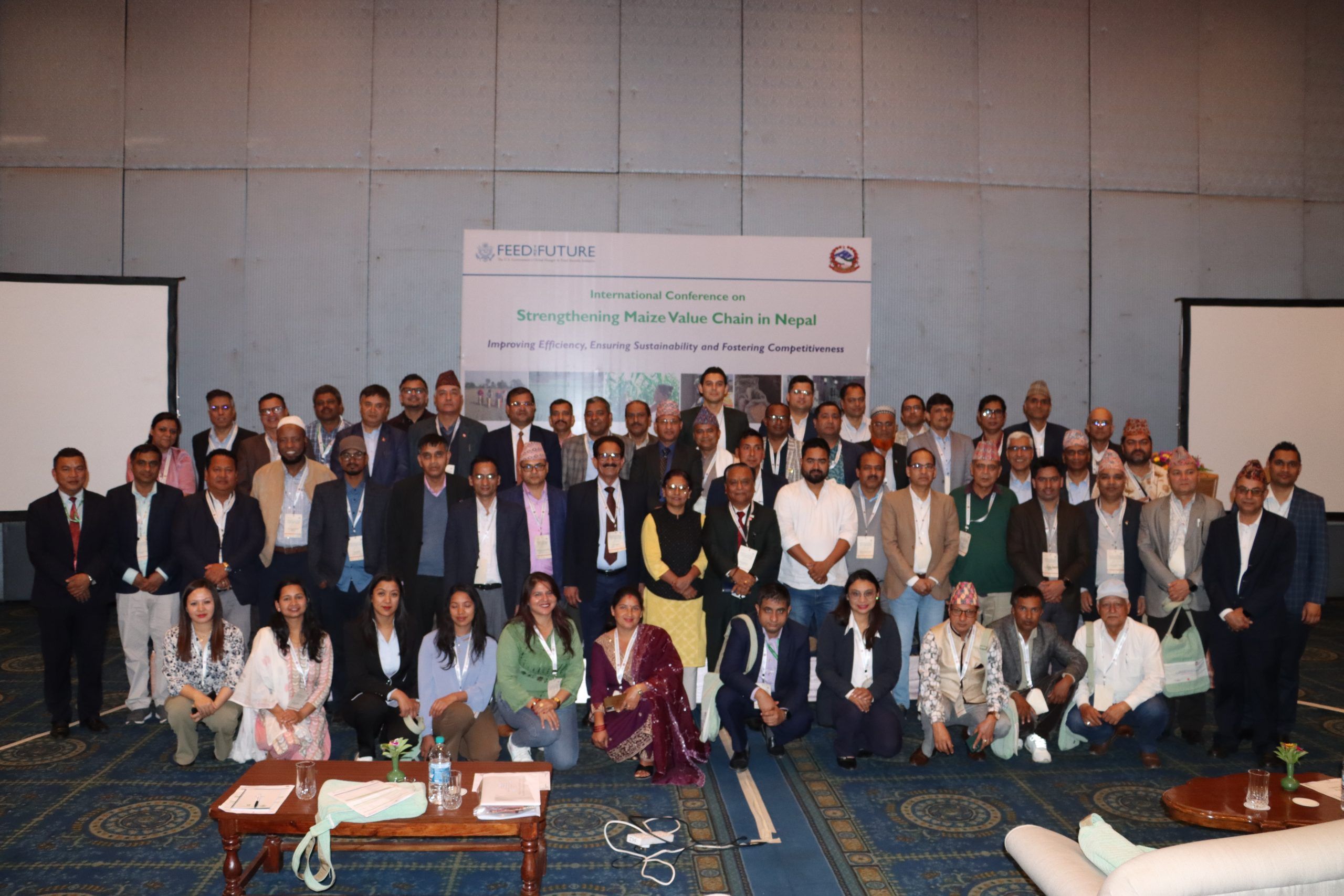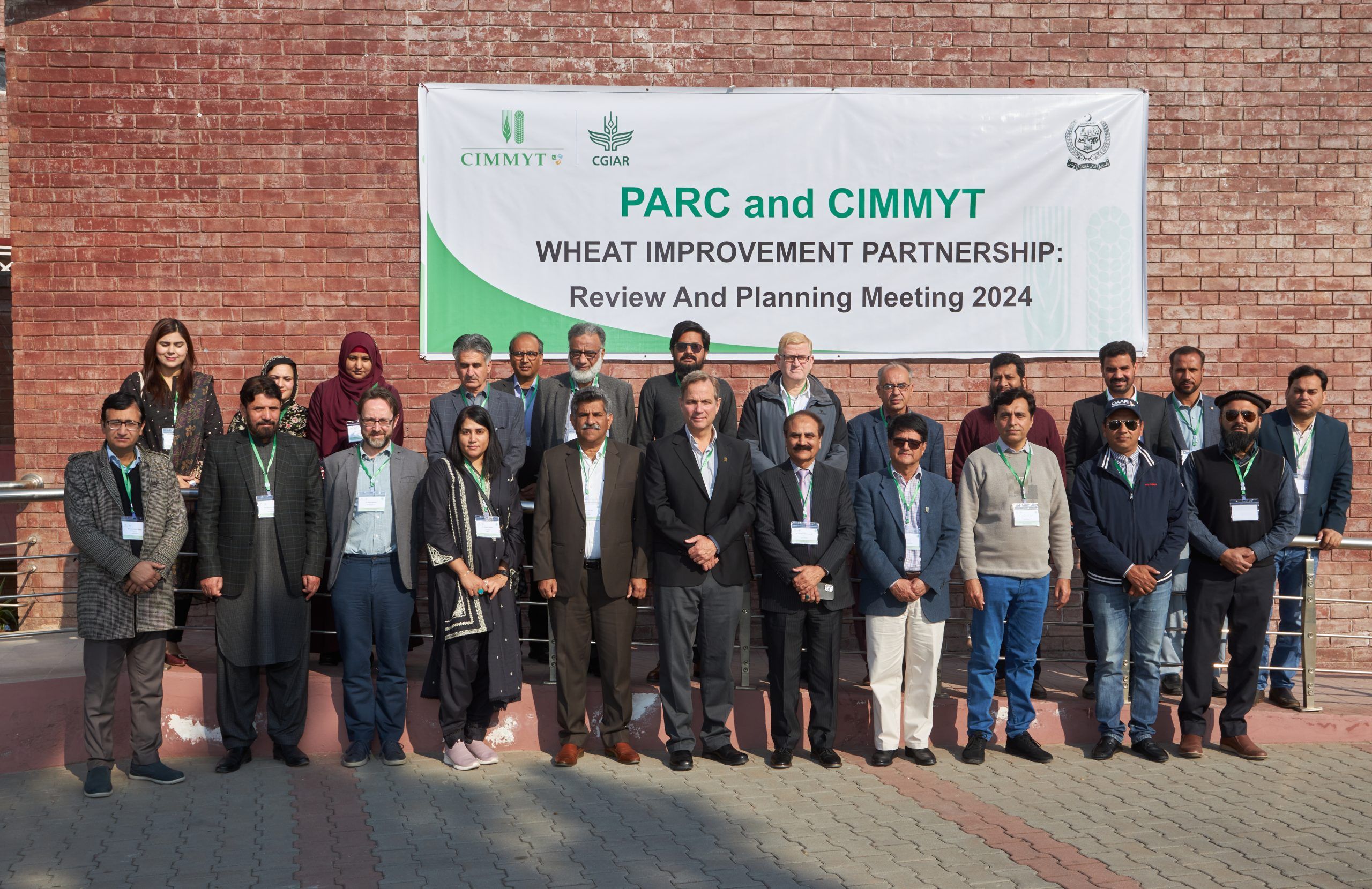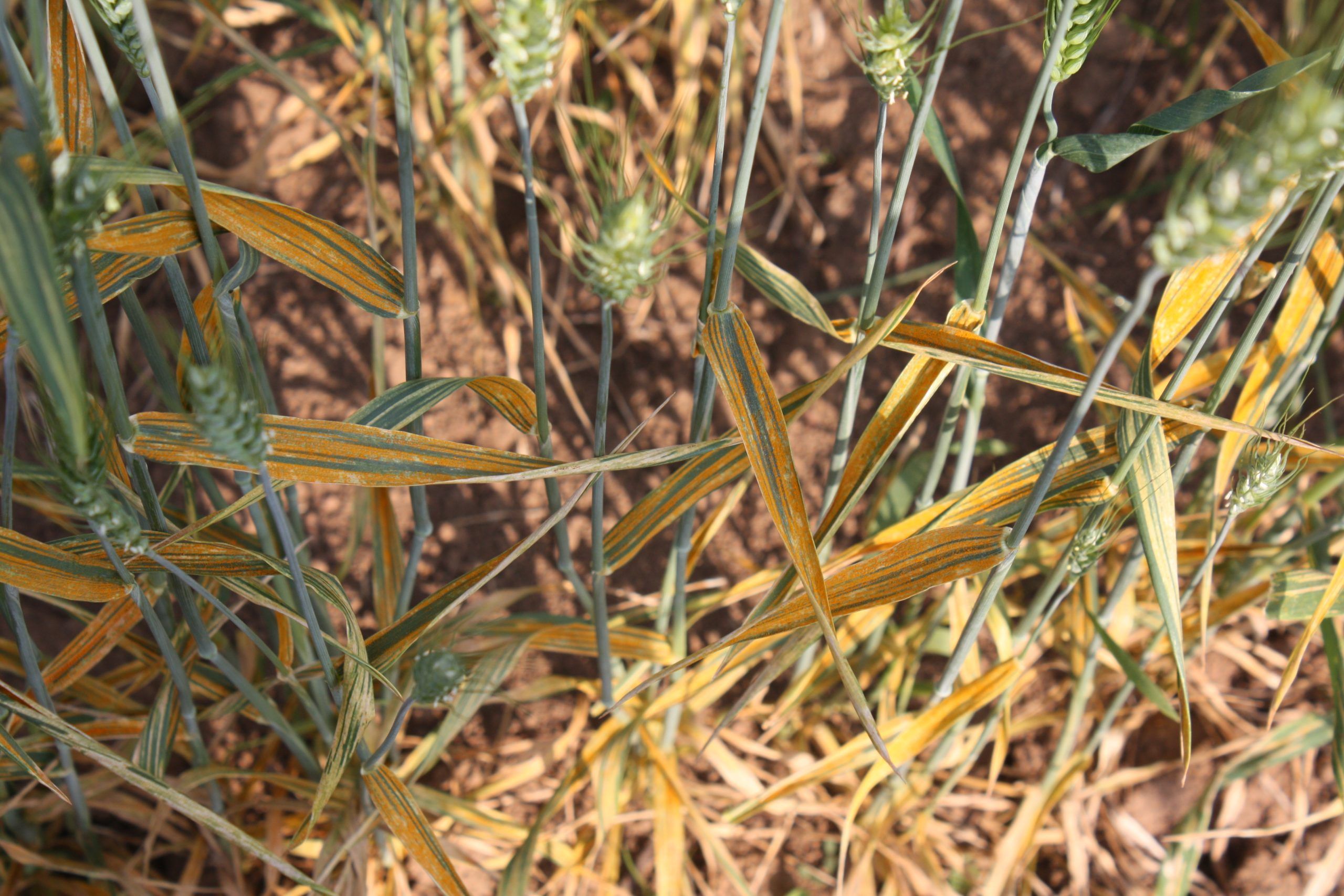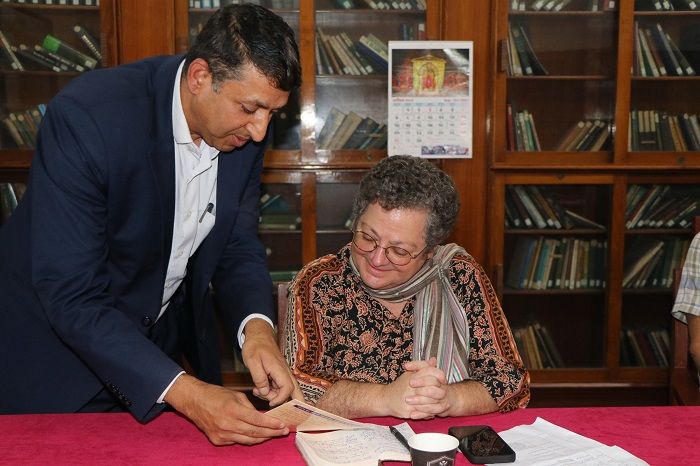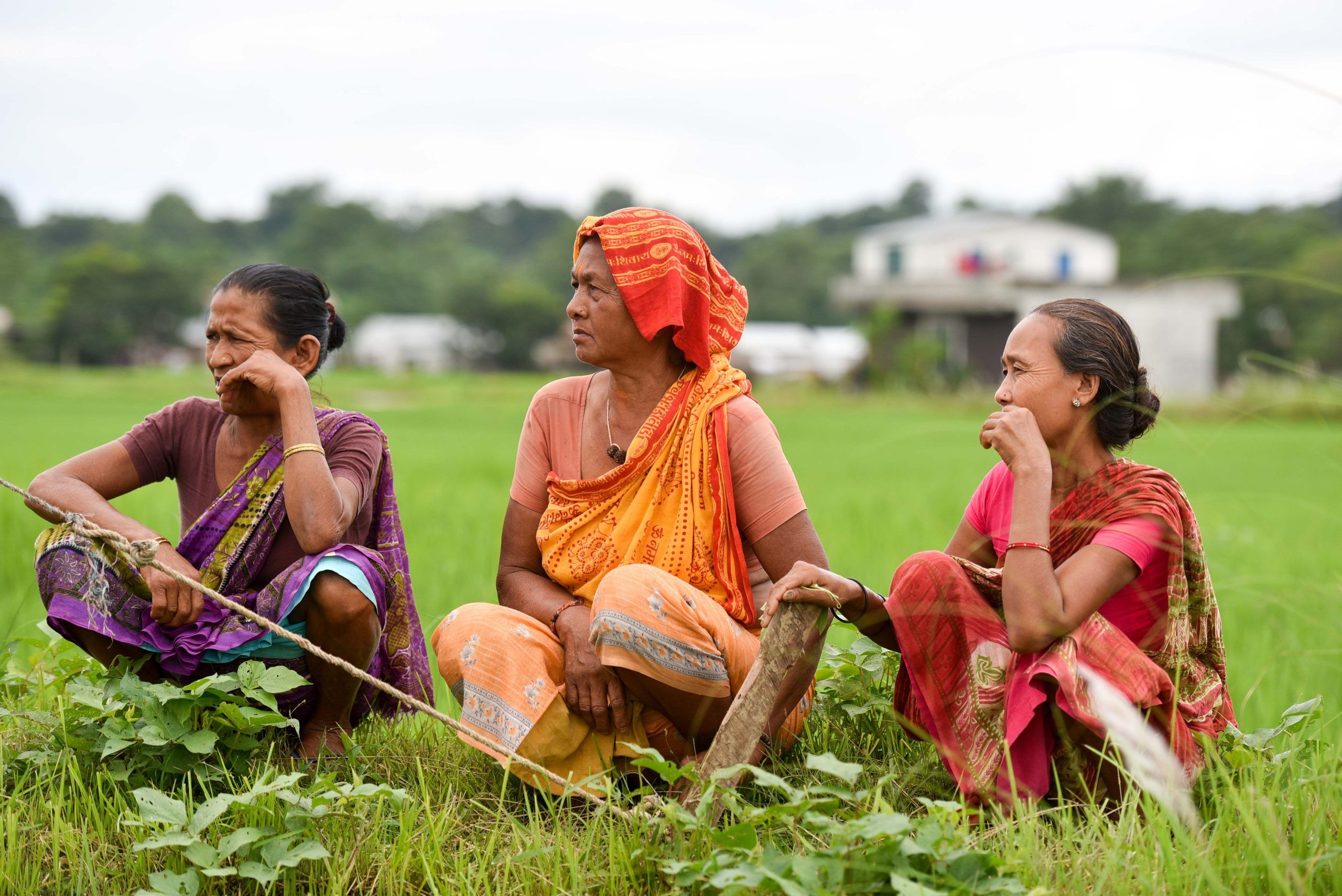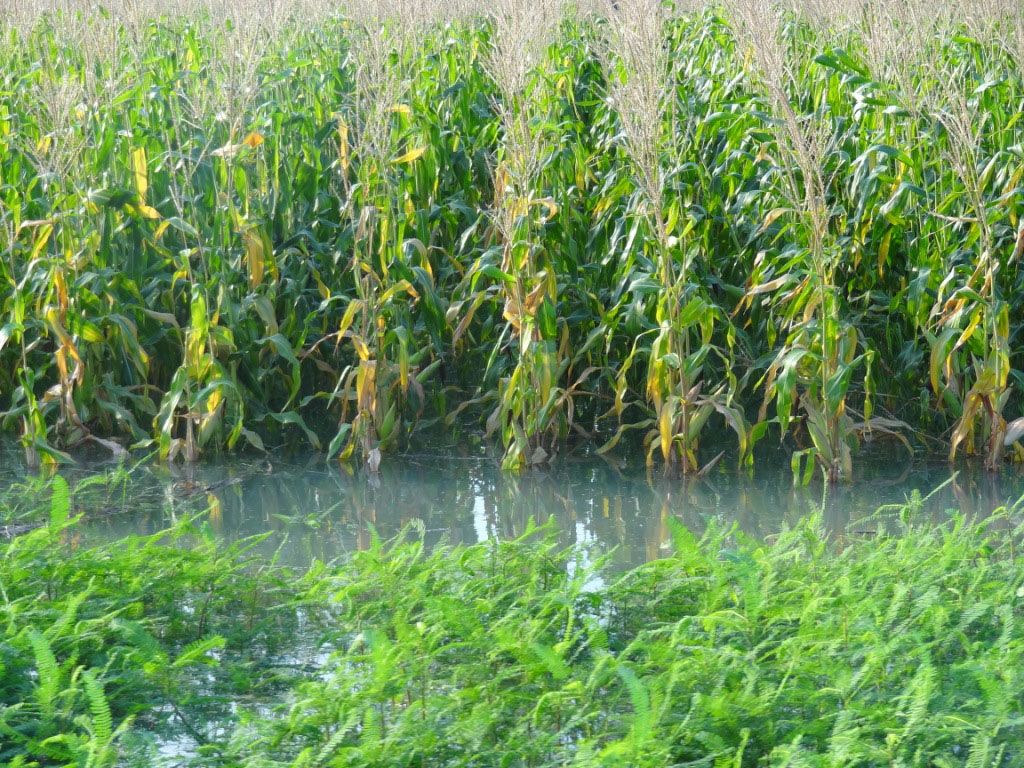funder_partner: Nepal Agricultural Research Council (NARC)
Strengthening maize value chains in Nepal
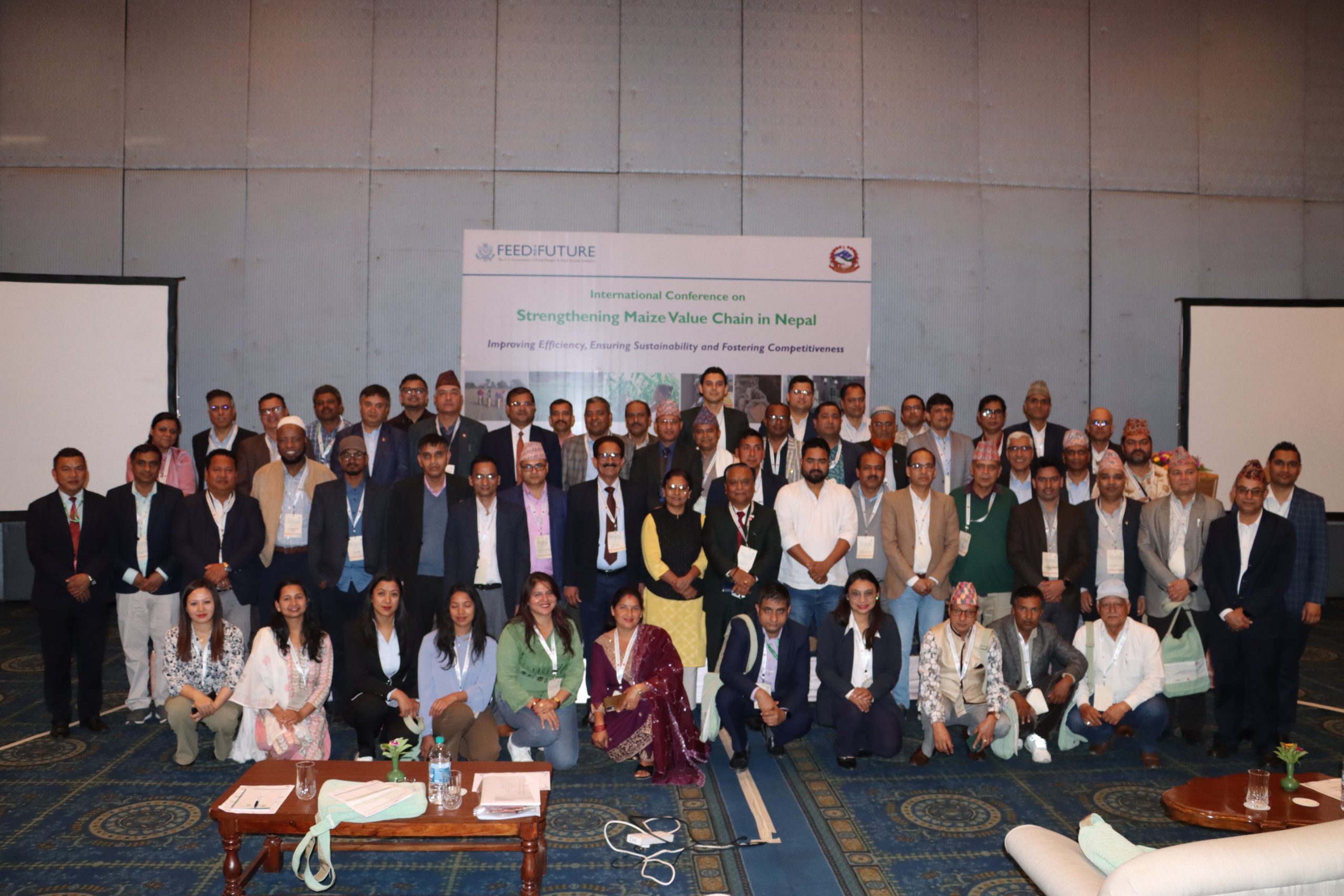
From April 3-4, 2024, CIMMYT hosted the International Conference on Strengthening Maize Value Chains in Nepal, organized in collaboration with the Ministry of Agriculture and Livestock Development, the Department of Agriculture (DOA), the National Agriculture Research Council (NARC), and the Agri Enterprise Center (AEC) of the Federation of Nepali Chamber of Commerce and Industry (FNCCI), with support from the United States Agency for International Development (USAID).
“Maize holds the potential to yield manifold benefits for farmers, the private sector, and the Government of Nepal, through the development of an efficient market system,” said Judith Almodovar, acting director of the Economic Growth Office at USAID Nepal. With this in mind, the two-day conference held in Kathmandu brought together government officials, policymakers, industry leaders, and experts from Nepal and the wider region to explore avenues for advancing the country’s maize sub-sector. It served as a platform for participants from India, Bangladesh, and Nepal, representing various functions of the maize value chain to share and exchange innovative commercial maize production, post-harvest, supply chain, and marketing models and policies aimed at improving efficiency, ensuring sustainability, and fostering competitiveness.
Addressing the opening session, Honorable Minister of Agriculture, Jwala Kumari Sah, highlighted the Government of Nepal’s priority to increase maize production and marketing, emphasizing the need to provide maize for food, feed, and fodder to boost incomes and improve livelihoods. While highlighting objectives and expectations from the conference, Country Representative for CIMMYT in Nepal, Dyutiman Choudhary, shared information about CIMMYT’s mandate and global expertise in maize science, as well as interventions to develop a maize seed-to-feed model in Nepal. The organization’s model fosters public-private farmer partnerships for commercial maize production as a key approach to develop an inclusive and sustainable maize sub-sector in the country. “As a result, maize yields have doubled in Nepal and farmer gate prices have increased by 50% in the last two years,” Choudhary explained.
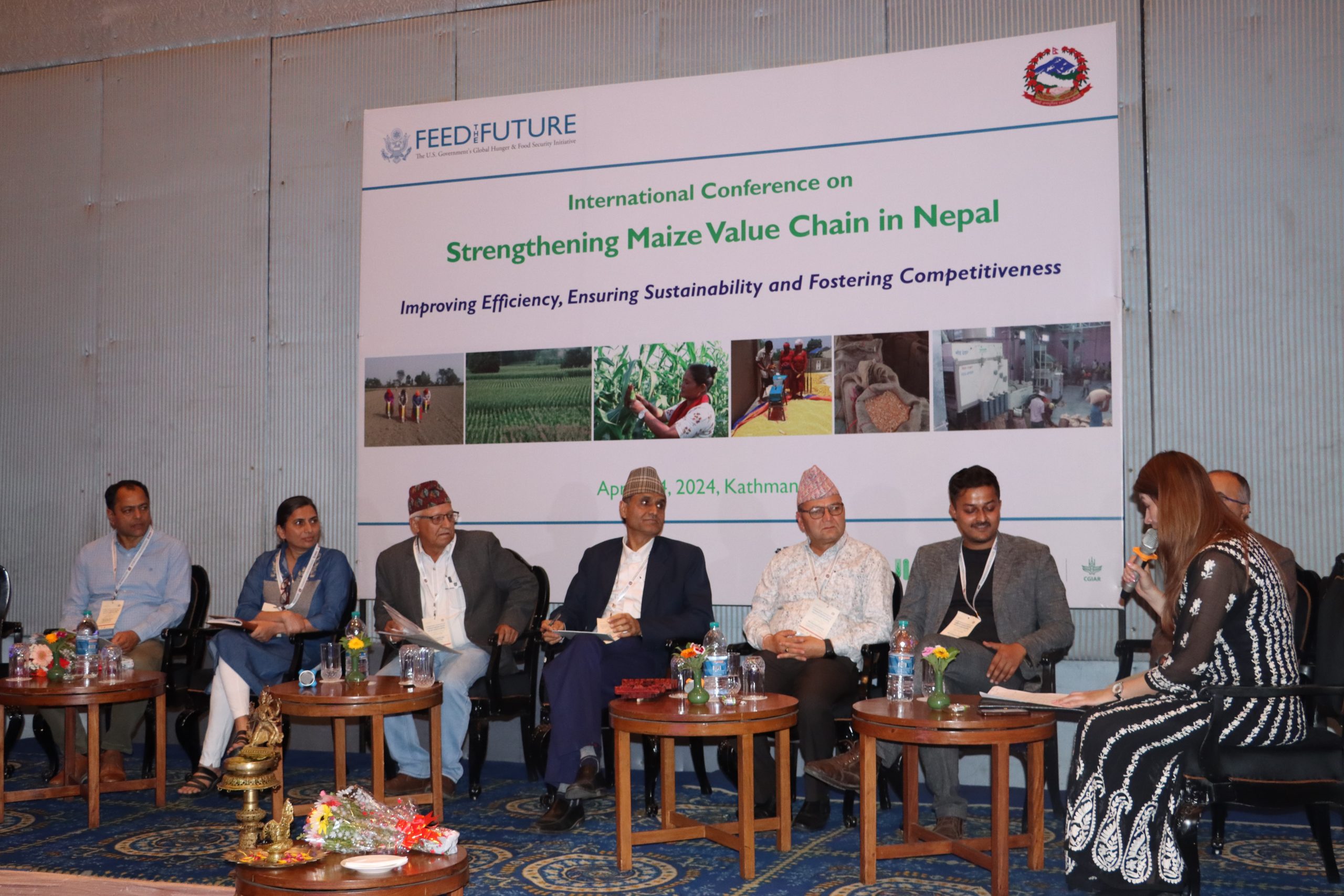
Recommendations for sustainable improvement
The conference involved five different technical sessions over the course of two days, each focused on various themes related to production, marketing, international best practices, and policies. Experts from Bangladesh, India, and Nepal were involved in insightful discussions and shared valuable knowledge and experience for advancing the commercialization of the maize sub-sector in Nepal.
Participants made recommendations for the sustainable improvement of national maize production and commercialization to meet the growing demand for food, feed, and fodder while reducing reliance on imports. These include developing high-yielding, short-duration, stress-tolerant maize varieties, and identifying models for commercial maize production, post-harvest, storage, market linkages, and supportive policies for improved investment and coordination among public sectors, market actors, and service providers to meet national maize demand.
At the closing session, Govinda Prasad Sharma, secretary at the Ministry of Agriculture and Livestock Development (MOALD), notified attendees that MOALD is in the process of strengthening a national strategy for maize commercialization and that the learning from the conference will provide valuable inputs. He added that the participation of experts from neighboring countries has provided deep insights for policy development.
Unlocking the power of collaboration in global wheat science
CIMMYT Global Wheat Program (GWP) scientists visited National Agricultural Research Systems (NARS) partners in Pakistan, Nepal, and India during February 2024. The key purpose was to review current approaches and explore new opportunities to enhance collaborative wheat improvement activities.
NARS partners described their current priorities and recent changes in their activities, while CIMMYT shared recent modernization efforts of its wheat breeding and highlighted opportunities to enhance collaborative wheat improvement. GWP representatives included Interim Wheat Director Kevin Pixley, and scientists Naeela Qureshi, Velu Govindan, Keith Gardner, Sridhar Bhavani, T.P. Tiwari, and Arun K Joshi.
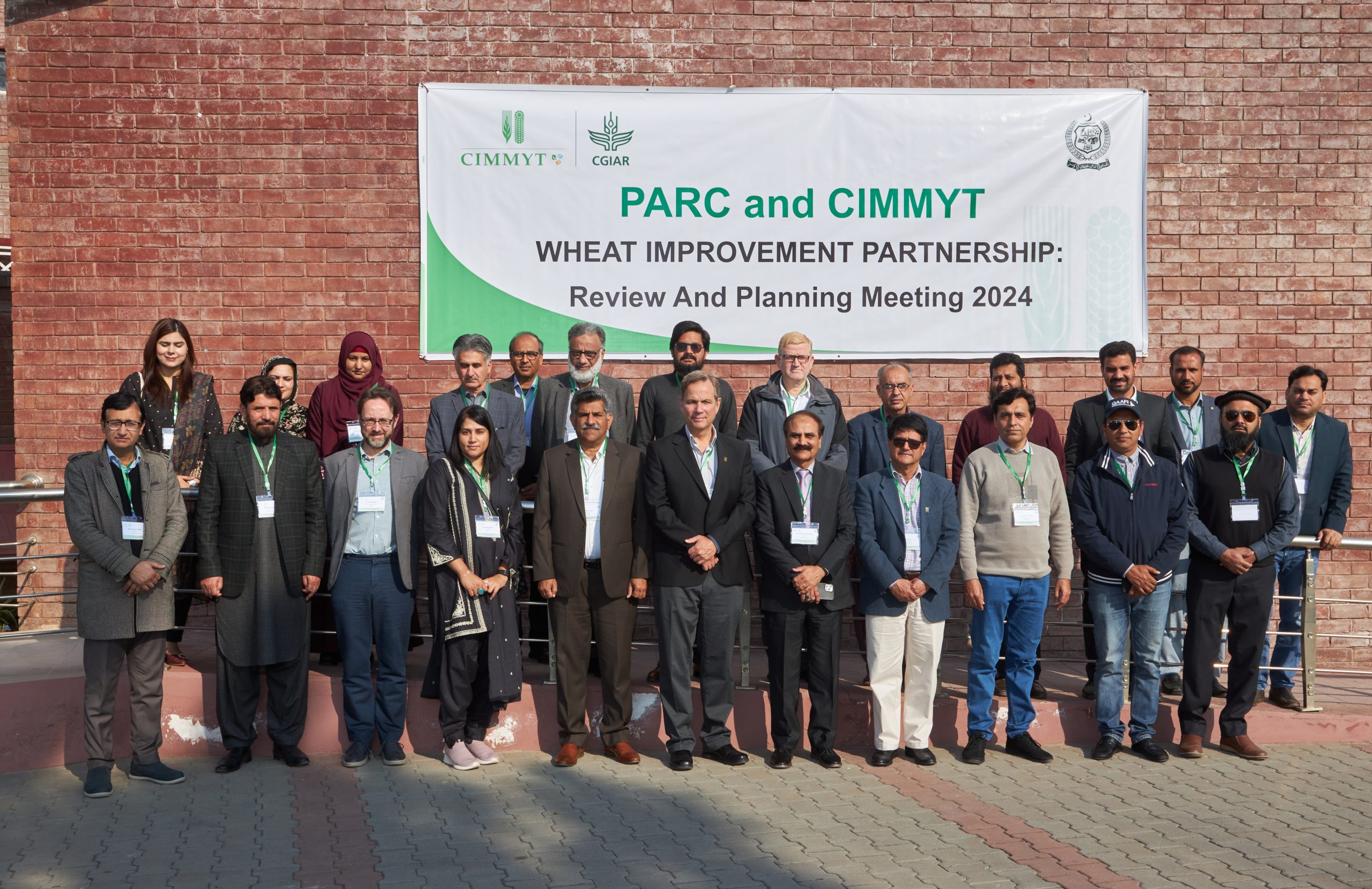
Planning the future of South Asian wheat
In each country, CIMMYT and NARS leaders held a one-day meeting to review and plan their wheat improvement partnership, with attendance from 25-30 wheat scientists in each country. The sessions aimed to review and identify bottlenecks to the wheat impact pathway in each country, describe recent changes in the breeding programs of CIMMYT and NARS partners, and prioritize and agree updates to the NARS-CIMMYT wheat improvement collaborations.
NARS partners highlighted their wheat improvement programs through field visits to research stations. Visitors attended Wheat Research Institute (ARI), Faisalabad and National Agricultural Research Center (NARC), Islamabad in Pakistan; National Wheat Research Program (NWRP), Bhairahawa and National Plant Breeding & Genetics Research Center (NPBGRC), Khumaltar in Nepal; and Indian Institute of Wheat and Barley Research (IIWBR), Punjab Agricultural University (PAU), Borlaug Institute for South Asia (BISA), and the Indian Agricultural Research Institute (IARI) in India.
The GWP team also visited: Faisalabad Agricultural University, with a special focus on collaborative zinc biofortification work in Pakistan; farmers’ fields in Nepal to see participatory evaluations of elite wheat lines (candidates for release as new varieties) and to hear from farmers about challenges and expectations from improved varieties; and the Lumbini Seed Company to learn about the crucial role of seed companies, bottlenecks, and opportunities in the pathway from research to impact in farmers’ fields.
NARS scientists and directors in all three countries were enthusiastic about the opportunities for enhanced partnership to adopt some of the modernizing technologies that AGG has brought to CIMMYT. Partners are especially keen to –
- Receive earlier generation varieties, segregating breeding lines to empower them to select in their own environments.
- Model and explore strategies to shorten their breeding cycles.
- Apply quantitative genetics tools to better select parents for their crossing blocks.
- Adopt experimental designs that improve efficiency.
- Explore opportunities for co-implementing improvement programs through shared testing schemes, communities of practice (e.g. for quantitative genetics or use of exotic germplasm to address challenges from climate change), and more.
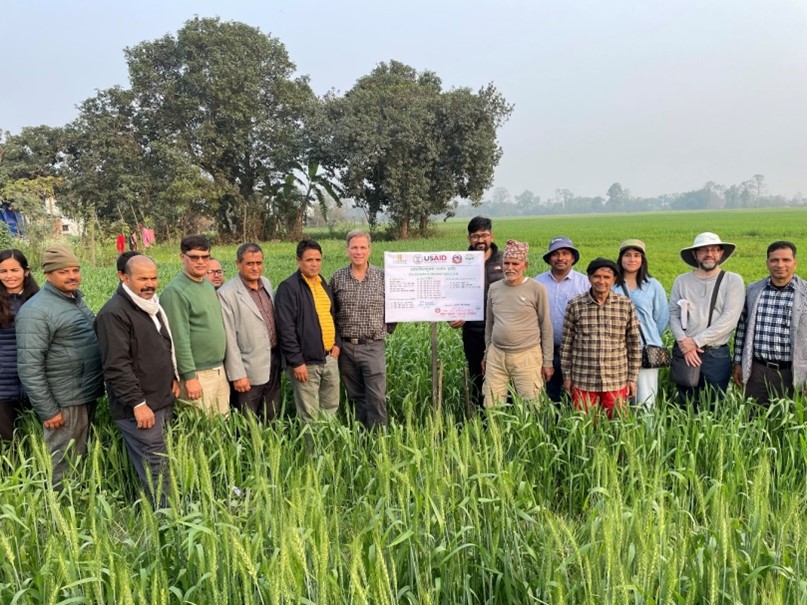
“The visit provided CIMMYT and NARS wheat scientists with the opportunity to exchange experiences and ideas, and to explore ways of enhancing collaborations that will strengthen our joint impact on wheat farmers and consumers,” said Pixley.
Following these visits, the Bangladesh Wheat and Maize Research Institute (BWMRI) soon reached out to CIMMYT to request a similar review and planning meeting, with a vision to modernize and strengthen their wheat improvement partnership.
Wheat pathogen surveillance system set to expand through new investment
One of the world’s largest crop pathogen surveillance systems is set to expand its analytic and knowledge systems capacity to protect wheat productivity in food vulnerable areas of East Africa and South Asia.
Researchers announced the Wheat Disease Early Warning Advisory System (Wheat DEWAS), funded through a $7.3 million grant from the Bill & Melinda Gates Foundation and the United Kingdom’s Foreign, Commonwealth & Development Office, to enhance crop resilience to wheat diseases.
The project is led by David Hodson, principal scientist at CIMMYT, and Maricelis Acevedo, research professor of global development and plant pathology at Cornell University’s College of Agriculture and Life Sciences. This initiative brings together research expertise from 23 research and academic organizations from sub-Saharan Africa, South Asia, Europe, the United States and Mexico.
Wheat DEWAS aims to be an open and scalable system capable of tracking important pathogen strains. The system builds on existing capabilities developed by the research team to provide near-real-time model-based risk forecasts and resulting in accurate, timely and actionable advice to farmers. As plant pathogens continue to evolve and threaten global food production, the system strengthens the capacity of countries to respond in a proactive manner to transboundary wheat diseases.
The system focuses on the two major fungal pathogens of wheat known as rust and blast diseases. Rust diseases, named for a rust-like appearance on infected plants, are hyper-variable and can significantly reduce crop yields when they attack. The fungus releases trillions of spores that can ride wind currents across national borders and continents and spread devastating epidemics quickly over vast areas.
Wheat blast, caused by the fungus Magnaporte oryzae Tritici, is an increasing threat to wheat production, following detection in both Bangladesh and Zambia. The fungus spreads over short distances and through the planting of infected seeds. Grains of infected plants shrivel within a week of first symptoms, providing little time for farmers to take preventative actions. Most wheat grown in the world has limited resistance to wheat blast.
“New wheat pathogen variants are constantly evolving and are spreading rapidly on a global scale,” said Hodson, principal investigator for Wheat DEWAS. “Complete crop losses in some of the most food vulnerable areas of the world are possible under favorable epidemiological conditions. Vigilance coupled with pathogen-informed breeding strategies are essential to prevent wheat disease epidemics. Improved monitoring, early warning and advisory approaches are an important component for safeguarding food supplies.”
Previous long-term investments in rust pathogen surveillance, modelling, and diagnostics built one of the largest operational global surveillance and monitoring system for any crop disease. The research permitted the development of functioning prototypes of advanced early warning advisory systems (EWAS) in East Africa and South Asia. Wheat DEWAS seeks to improve on that foundation to build a scalable, integrated, and sustainable solution that can provide improved advanced timely warning of vulnerability to emerging and migrating wheat diseases.
“The impact of these diseases is greatest on small-scale producers, negatively affecting livelihoods, income, and food security,” Acevedo said. “Ultimately, with this project we aim to maximize opportunities for smallholder farmers to benefit from hyper-local analytic and knowledge systems to protect wheat productivity.”
The system has already proven successful, contributing to prevention of a potential rust outbreak in Ethiopia in 2021. At that time, the early warning and global monitoring detected a new yellow rust strain with high epidemic potential. Risk mapping and real-time early forecasting identified the risk and allowed a timely and effective response by farmers and officials. That growing season ended up being a production record-breaker for Ethiopian wheat farmers.
While wheat is the major focus of the system, pathogens with similar biology and dispersal modes exist for all major crops. Discoveries made in the wheat system could provide essential infrastructure, methods for data collection and analysis to aid interventions that will be relevant to other crops.
Fostering agricultural innovation: collaborative meetings with NARC and NSSRC in Nepal
On October 4, 2023, Sieglinde Snapp, program director of the Sustainable Agrifood System (SAS) program, along with the country representative of CIMMYT and project lead of the Nepal Seed and Fertilizer Project (NSAF) Dyutiman Choudhary, visited the National Soil Science Research Center (NSSRC) under the Nepal Agricultural Research Council (NARC). The chief of NSSRC, Shree Prasad Vista, and his team welcomed Snapp and the team from CIMMYT. In the meeting, Vista presented an overview of NSSRC’s work and emphasized the collaborative work with NSAF. He focused on the achievements NSSRC has accomplished with the joint efforts of NSAF. He highlighted the launch of the Digital Soil Map and new fertilizer recommendations. He also reflected on the benefits of soil health cards to the farmers that NSAF supported. In addition, he prioritized the importance of collaboration to improve the livelihood of farmers. He appreciated the cross-learning that CIMMYT has been providing for knowledge transfer and adopting best management practices. After the meeting, the team visited the NSSRC’s laboratory, which provided insights about their soil research activities.
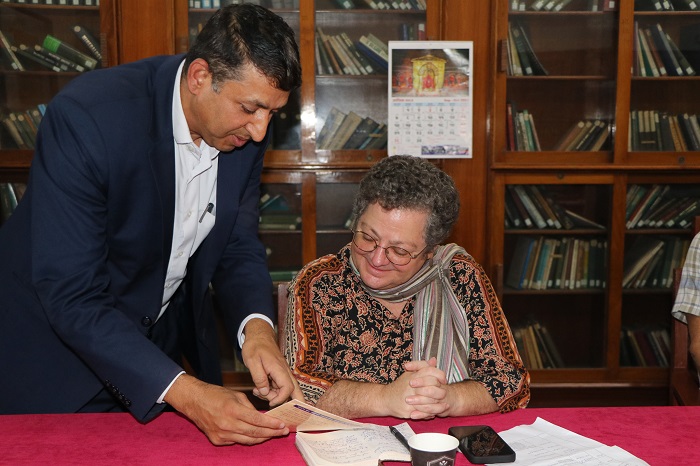
Following the visit to NSSRC, Snapp and CIMMYT colleagues visited the NARC Head Office within the same premises. The Executive Director of NARC, Dhurbaraj Bhattari, welcomed the delegates in his office. The ED presented an overview of NARC and its primary focus. He emphasized the importance of collaborative work with CIMMYT. After the presentation, the delegates from CIMMYT, NARC and NSSRC discussed critical issues regarding sustainable agricultural practices. The primary focus of the meeting was the strategies to boost sustainable agricultural productivity to enhance crop yields, value chain enhancement for farmer’s benefits, policy development for collaboration and harmonization to encourage horizontal and vertical cooperation between different stakeholders, need for investment in research and infrastructure at the grassroots level for addressing the challenges faced by farmers.
Addressing the meeting, Snapp focused on the importance of partnership aligning with CIMMYT’s latest strategies to facilitate knowledge transfer and the adoption of best practices. She also raised her concerns regarding the loss of crops between harvest and storage. She reflected on the commitment of CIMMYT to improving agriculture through science and innovation to change the livelihood of farmers. She showed her commitment to ongoing collaboration for sustainable agricultural development.
The meeting provided a platform to strengthen the longstanding collaboration between CIMMYT and NARC to address the challenges faced by farmers to enhance agricultural productivity through sustainable approaches. The Executive Director of NARC extended heartfelt gratitude for CIMMYT’s support, which has played a pivotal role in transforming the lives of countless farmers. He also expressed hope for continued collaboration in the future.
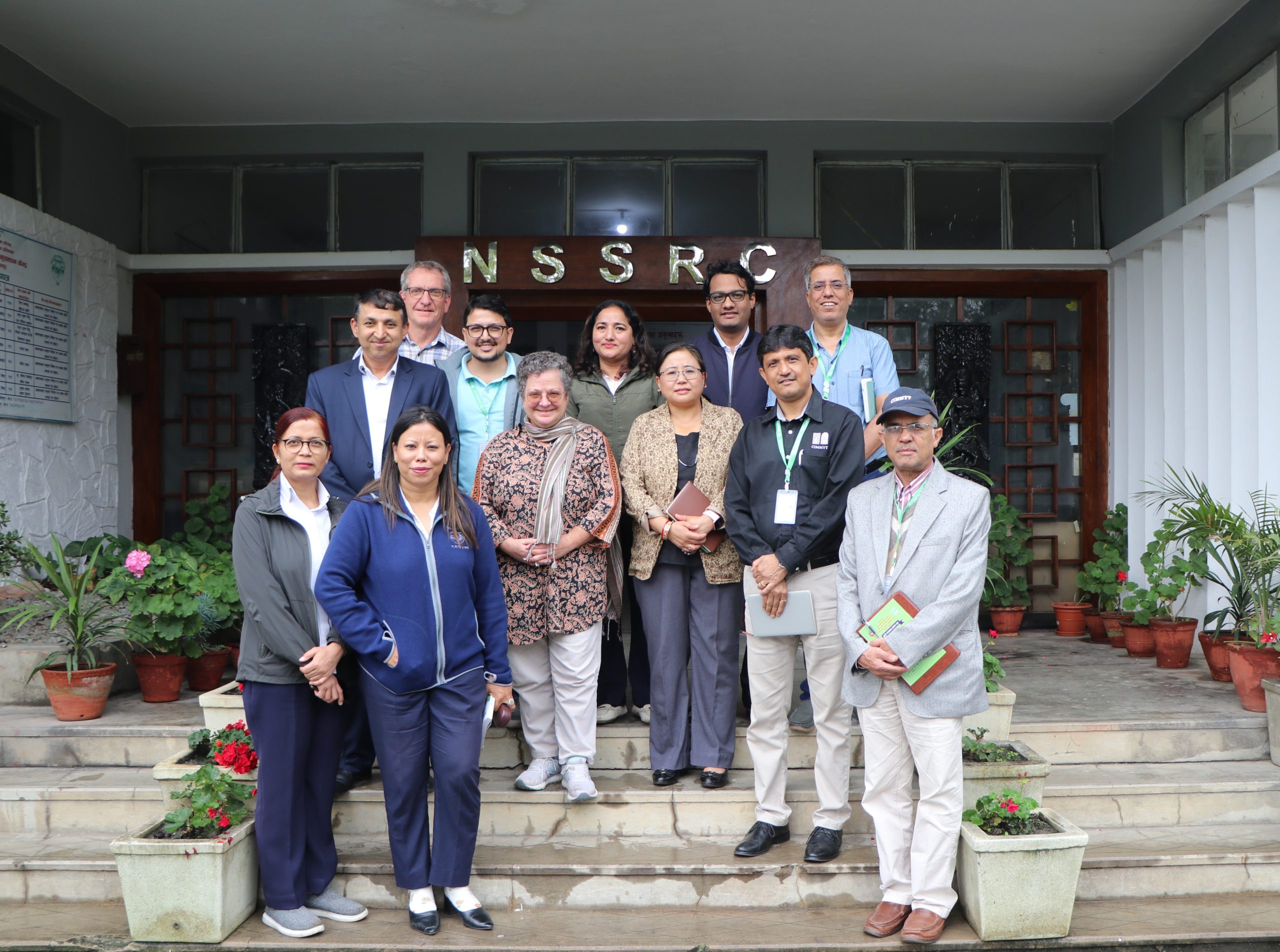
Snapp visited CIMMYT Nepal from October 3-7, 2023. 2023. During her visit, she interacted and engaged with various stakeholders, including Nepal staff, farmers in the field, agricultural cooperatives, government authorities, seed growers, suppliers and feed mills.
Atlas of Climate Adaptation in South Asian Agriculture (ACASA)
About ACASA
Increasing climatic risks make it imperative to identify spatial and temporal risks that are likely to impact agriculture. Adaptation options are thus needed to mitigate the negative impacts. Considering this, with support from the Bill & Melinda Gates Foundation (BMGF), the Borlaug Institute for South Asia (BISA) is working with national agriculture research systems in South Asia to develop the Atlas of Climate Adaptation in South Asian Agriculture (ACASA).
This comprehensive Atlas aims to provide granular-scale information for South Asian countries at the village scale by integrating various spatially explicit data sets together. It covers climate hazards, and the exposure of smallholder populations, farms, and crop and livestock enterprises to hazards. It will also look into the vulnerability of these populations to climatic risks, impacts on critical commodities in the region, and evidence of the effectiveness of different climate adaptation interventions.
The ACASA offers a unique set of tools that can facilitate improved investment targeting and priority setting, and support stakeholders’ decision-making and investments in agricultural technologies, climate information services, and policies. The intended beneficiaries of this Atlas include governments, insurance and agri-food industries, international and national donors, and adaptation-focused entities.
Driven by science and data, explore ACASA’s approach to safeguard South Asian Agriculture
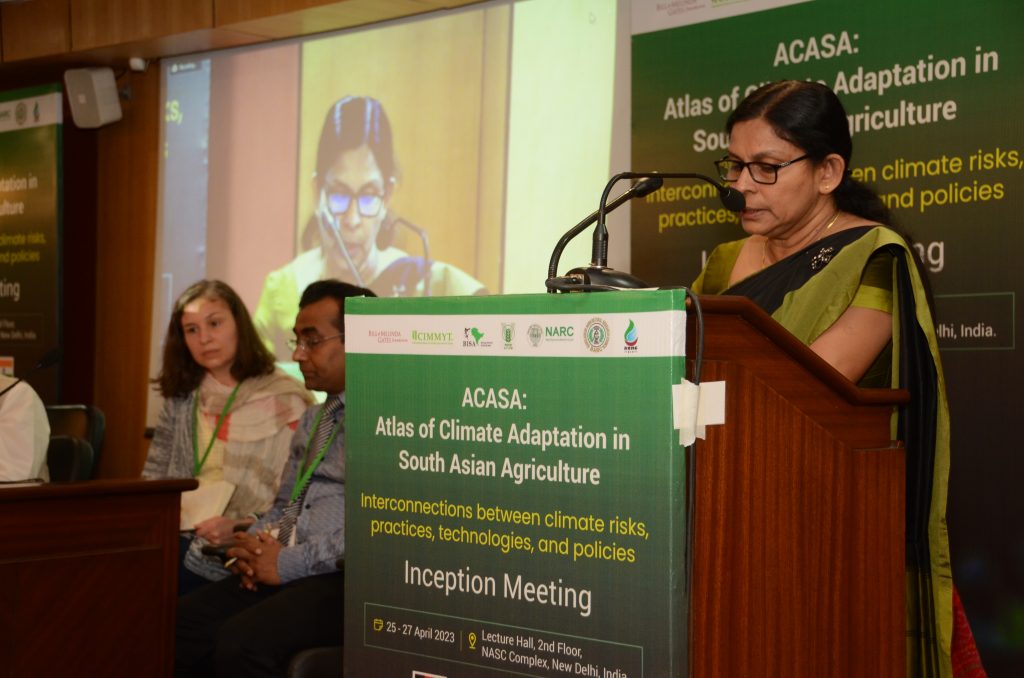
ACASA Objectives
- Increase the quality, availability, and utility of data and evidence.
- Improve climate adaptive capacity of agricultural systems and guide stakeholders on location-specific adaptation options, including gender-informed technologies, practices, and climate information services to address risks.
- Increase the resilience of small-scale producers to climate variability and change.
ACASA Workstreams
Climate Risk Assessment
Gridded risk analysis using historical crop yield data and satellite signatures; indicators of current and future hazards, exposure, and vulnerabilities.
Assessment of Climate Impact on Commodities
Climate impact on commodities under current and future climate
Portfolio of Adaptation Options
Decision trees, crop/livestock models, statistical and econometric models, and expert consultations
UI/UX Development
An open-source, web-enabled, interactive, and dynamic Atlas development
Capacity Strengthening of Stakeholders
Training materials, tools, tutorials, and country/regional level workshops
The advisory panel established under ACASA will identify potential users, use cases in different countries, and guide and review Atlas’ progress. The constituted panel will have the scientific advisory committee (SAC) and South Asia’s country team leaders, who will be instrumental in hosting and adapting the Atlas. Explore the dynamic team of ACASA’s advisory panel.
Reports
ACASA Project Inception Report
To discuss ACASA and its development, a 3-day inception meeting was held in Delhi, India, from 25th to 27th April 2023, marked by 70 distinguished guests from Nepal, Sri Lanka, Bangladesh, and India discussing the various aspects of Atlas. The inception meeting provided some valuable recommendations/highlights that will be instrumental in building the Atlas.
The ACASA project places significant importance on the practical applications of the Atlas. Various stakeholders could utilise Atlas to enhance investment in agricultural adaptation technologies and climate information services. Drawing from the diverse perspectives of the panellists during the inception meeting, a consolidated report was prepared on how ACASA team and its partners will be prioritising and developing use cases based on geographical and thematic considerations.
On-farm-Maize Select
The On-farm-Maize Select project will pilot a new genomics-driven selection method based on on-farm performance of Stage 1 maize breeding materials that is expected to deliver increased rates of genetic gain to the farmers through:
- More accurate selection for the conditions of small-scale producers in Sub-Saharan Africa (SSA), especially women and the poorest farmers, who often apply fewer inputs.
- Improved sampling of the diversity of on-farm conditions across the entire target population of environments (TPE).
- Improved understanding of the diversity of socio-economic factors, agronomic management (especially by women), and environmental on-farm conditions across the TPE.
- Genomic-assisted rapid recycling of parents (population improvement) to reduce breeding cycle time.
- Improved social inclusion in breeding processes, leading to greater gender responsiveness and wider appeal of breeding outputs.
The hypothesis is that generating genomic estimated breeding values (GEBVs) based on on-farm phenotyping will lead both to increased selection accuracy for performance under farmer management, including challenging conditions that women and the poorest farmers face, and enable rapid cycling of parents by reducing the number of years of testing before new crosses are made. This hypothesis will be initially tested by estimating expected genetic gain on-station and on-farm based on the genetic correlation between on-station and gender-disaggregated on-farm performance of the same set of genotypes, as well as the repeatability of selection on-station versus on-farm. The value of on-farm versus on-station testing for estimating GEBVs for parent selection and early-stage advancement will be confirmed in two selected CIMMYT maize breeding pipelines (one each in eastern and southern Africa – EA-PP1 and SA-PP1) by comparing the performance on-farm of a sample of Stage 1 breeding lines from the second cycle of on-farm vs on-station selection. The efficacy and costs of undertaking on-farm genomic selection versus on-station selection at Stage 1 of the two selected breeding pipelines will also be evaluated.
Key Outputs
- The genetic correlation between, and accuracy of estimation of, on-farm and on-station breeding values will be measured in terms of ability to predict performance under farmer management. This will enable comparison of the relative efficiency of direct selection on-farm versus indirect selection on-station. We expect that increased on-farm genetic gains will be achieved if the genetic correlation between on-farm and on-station performance is 0.8 or less.
- Elite breeding populations improved for on-farm performance will be generated, and products extracted from them will be compared on-farm with those selected the same founder populations using conventional on-station selection (comparison of the products of the pipelines will not be possible until the second project phase, if approved).
- Separate GEBVs generated for lines under the management of male and female farmers, with genetic correlations estimated to ensure that performance on female-managed farms is adequately weighted in selection indices.
- Genomic-assisted on-farm sparse testing network, experimental design and capacity developed.
- Improved representativeness of results due to enhanced gender and social inclusion approaches in the on-farm trial design.
Expected Outcomes
- Greater rates of genetic gain delivered on-farm through more extensive sampling of TPEs
- Improved accuracy of selection based on performance in farmers’ fields in the TPE.
- Incorporation of farmer-preferred traits in selection decisions supports faster replacement of older hybrids with newer products.

